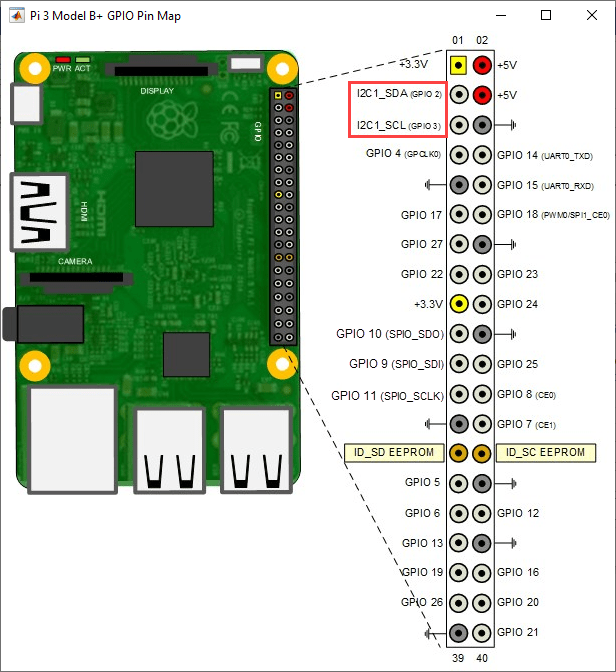lsm303c
Description
The lsm303c object reads ambient temperature, linear acceleration
and magnetic field along the X, Y, and Z axes using the STMicroelectronics® I2C-based LSM303C inertial measurement unit (IMU) sensor interfaced with the
Raspberry Pi® hardware. Before you use the lsm303c object, ensure that the
I2C interface is enabled on your Raspberry Pi kernel. You can then create a connection to the Raspberry Pi board using the raspi object and set its properties. For more
information, see raspi.
Creation
Description
sensor = lsm303c(mypi)mypi.
sensor = lsm303c(mypi,Name,Value)Name,Value arguments.
Input Arguments
Name-Value Arguments
Object Functions
readAcceleration | Read one sample of acceleration from sensor |
readTemperature | Read one sample of temperature from sensor |
readMagneticField | Read one sample of magnetic field from sensor |
Examples
Extended Capabilities
Version History
Introduced in R2021a
See Also
readAcceleration | readTemperature | readMagneticField | raspi | scanI2CBus | showPins | Raspberry Pi Resource
Monitor App
